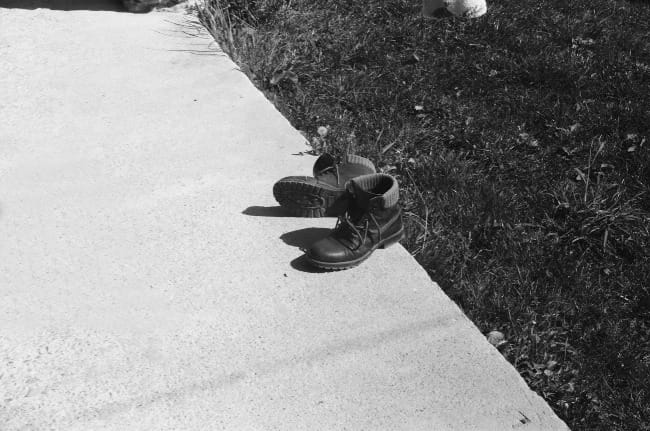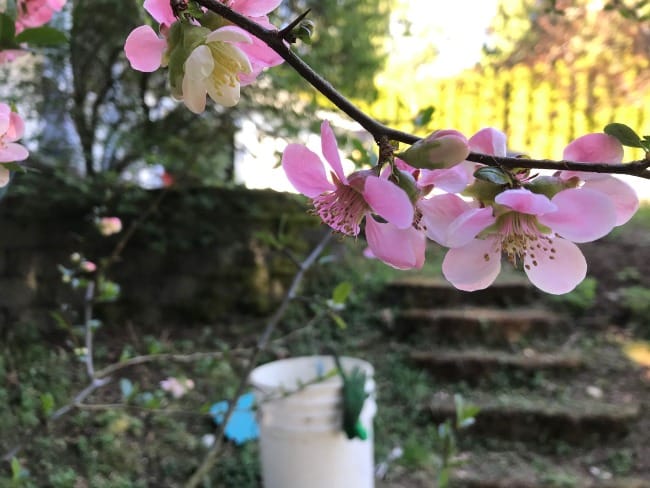In "Ode to Dirt" by Sharon Olds, we see the dirt we walk upon in a different light, not just as a backdrop but as mother, cousin, source, and ending place. It is not just with other animals of the earth that we share a commonality, but with the earth itself.
Ode to Dirt
by Sharon Olds
Dear dirt, I am sorry I slighted you,
I thought that you were only the background
for the leading characters—the plants
and animals and human animals.
It’s as if I had loved only the stars
and not the sky which gave them space
in which to shine. Subtle, various,
sensitive, you are the skin of our terrain,
you’re our democracy. When I understood
I had never honored you as a living
equal, I was ashamed of myself,
as if I had not recognized
a character who looked so different from me,
but now I can see us all, made of the
same basic materials—
cousins of that first exploding from nothing—
in our intricate equation together. O dirt,
help us find ways to serve your life,
you who have brought us forth, and fed us,
and who at the end will take us in
and rotate with us, and wobble, and orbit.
“Ode to Dirt” from Odes by Sharon Olds. Copyright © 2016 by Sharon Olds. Originally published by Alfred A. Knopf.
It's easy to "slight" dirt. It's just there, underneath other things, covered by leaves, grass, pavement, buildings. It's easy to see it as merely what we add other more interesting things into or onto—"only the background/for the leading characters." But that "backdrop," unlike a set on a stage, can't be changed for another. Its character is essential in enabling the other characters to live and thrive. As Olds describes eloquently in the poem,
It’s as if I had loved only the stars
and not the sky which gave them space
in which to shine.
I believe we devalue dirt partially because, although it produces things essential to our life, the things it produces and supports garner most of our attention. Flowers are more colorful; people are noisier; fruit is tastier. And yet, dirt is the foundation of our world. (I am using "dirt" interchangeably here with "soil" although, technically, dirt is displaced soil such as we find on our hands or in landslides rather than what is alive and connected to the soil ecosystem). Dirt (or technically, soil) is what supports life and is full of life itself.
Subtle, various,
sensitive, you are the skin of our terrain,
you’re our democracy.
I love the idea that dirt is our democracy. Dirt covers this earth and wherever you are, if you plant a seed in that dirt, it sprouts that seed into a plant, regardless of who you are.

Reconnecting with Dirt
Because of the way many of us live, it is very easy to "slight" the dirt. As we walk from house to car, from car to workplace, from workplace to leisure activity, from leisure back home again, we may never even stray from pavement or flooring. We may always have a buffer between us and the dirt. How long has it been since you walked on dirt itself? How long since you lifted a scoopful of dirt in your bare hands? With a perpetual buffer between us and it, it isn't surprising that we don't think about dirt or value it as it should be valued.
That buffer is often mental as well as physical. There is a temptation to see ourselves as entirely different and separate from other parts of creation, such as dirt—ourselves as more idea and soul than body and physical substance. As much as we want to believe ourselves distinct and entirely separate, however, the truth is that the chemicals which make up our body are the same chemical elements that are present in the ground all around us.
but now I can see us all, made of the
same basic materials—
cousins of that first exploding from nothing—
in our intricate equation together.
"Humus," meaning "earth and soil," and "human" share the same root, but we don't think of ourselves this way. Another word, "humility," with the same root and meaning "on the ground," is a word that can help us find a better posture toward the rest of creation. (The name Adam, meaning "earth creature" also reflects this connection).
Death and Life in Dirt
This may bring us closer to the reality of our impermanence on this earth than we would like. I don't know anyone who, when asked to quote a favorite verse, would choose Ecclesiastes 3:19-20: Surely the fate of human beings is like that of the animals; the same fate awaits them both: As one dies, so dies the other. All have the same breath; humans have no advantage over animals... All go to the same place; all come from dust, and to dust all return.
The phrase from the Book of Common prayer, "Dust to dust, ashes to ashes" is a good, though difficult, reminder for us as well as Genesis 3:19: "By the sweat of your brow you will eat your food until you return to the ground, since from it you were taken; for dust you are and to dust you will return.'"
Why do we need to remember this? First of all, because it's true. Even if we conscientiously avoid talking about death, that doesn't change the reality that our death is a certain thing and our bodies will one day return to the earth.
Second of all, I think acknowledging this helps us place a truer value both on the soil and on our time on the soil. Being reminded that both of these things are precious and limited can spur us to live more mindfully and carefully, neither wasting nor ruining either of these fine gifts.
Olds wrote this poem when she came to see that the flip side of the earth being a living thing also means that it is capable of death.
O dirt,
help us find ways to serve your life,
you who have brought us forth, and fed us,
and who at the end will take us in
and rotate with us, and wobble, and orbit.
We can see this on a small scale when soil has been displaced from its organic system and becomes mere chemicals devoid of life. Living soil on the other hand, is part of an ecosystem, with giving and taking, cycles and reciprocity.
To see dirt as living is to understand the possibility of its death, in the same way that any living thing's end of life is possible. In an interview, Olds said that she wrote this poem when this understanding hit her. "I couldn’t bear to believe that the Earth could die. I just couldn’t bear to believe it."[1]. Seeing it as a living thing changes the nature of our relationship with it. If we share an "intricate equation together," we can affect whether the "dirt" lives or dies, in the same way that it affects our health and well-being.
Restoring Dirt
Our present house was ten years old when we bought it. The soil had been scraped off, fill had been brought in, and it was left like that until we moved in. When I first dug in the dirt, I was scraping my way into hardpan. There were no worms, no moisture, no visible life. Over the past 17 years, it has been my goal to bring life back into that dirt. I have composted with leaves and rabbit pellets; I have nurtured native plantings and encouraged birds and other creatures to make it their home; I have pulled weeds by hand, avoiding pesticides and artificial mulch. I have often stepped out of the way to let the ecosystem renew itself. Gradually, I have watched the dirt come back to life. By finding ways to "serve the life" of the dirt, the dirt has been revived. And when I dig into it now with my bare hands, I can feel the worms wiggle in my fingers. It is alive again.

Reflection Questions: In what ways do you feel connected or unconnected from the dirt? What does it mean to you to "honor" and "serve" the earth? How does this connect to your faith?
As a reminder, the invitation I issued last week still holds. Over the next few days, keep your eyes and ears open for how you see creation praising God. When you see something that captures your attention as a beautiful, interesting, or entertaining voice of praise, take a picture, shoot a very short video, or write a three or four-line poem that is a verbal snapshot of that experience. Send it to me at info@circlewood.online by next Monday, December 6th, and I will share it in a Thursday post (perhaps through a video compilation of what is sent in). It would be wonderful to have voices from many people and places to share!
As always, feel free to send me an email at info@circlewood.online
Louise
Listen to Sharon Olds read Ode to Dirt here.
[1] The On Being Project Copyright © 2021, https://onbeing.org/programs/sharon-olds-odes-to-the-bleep/.